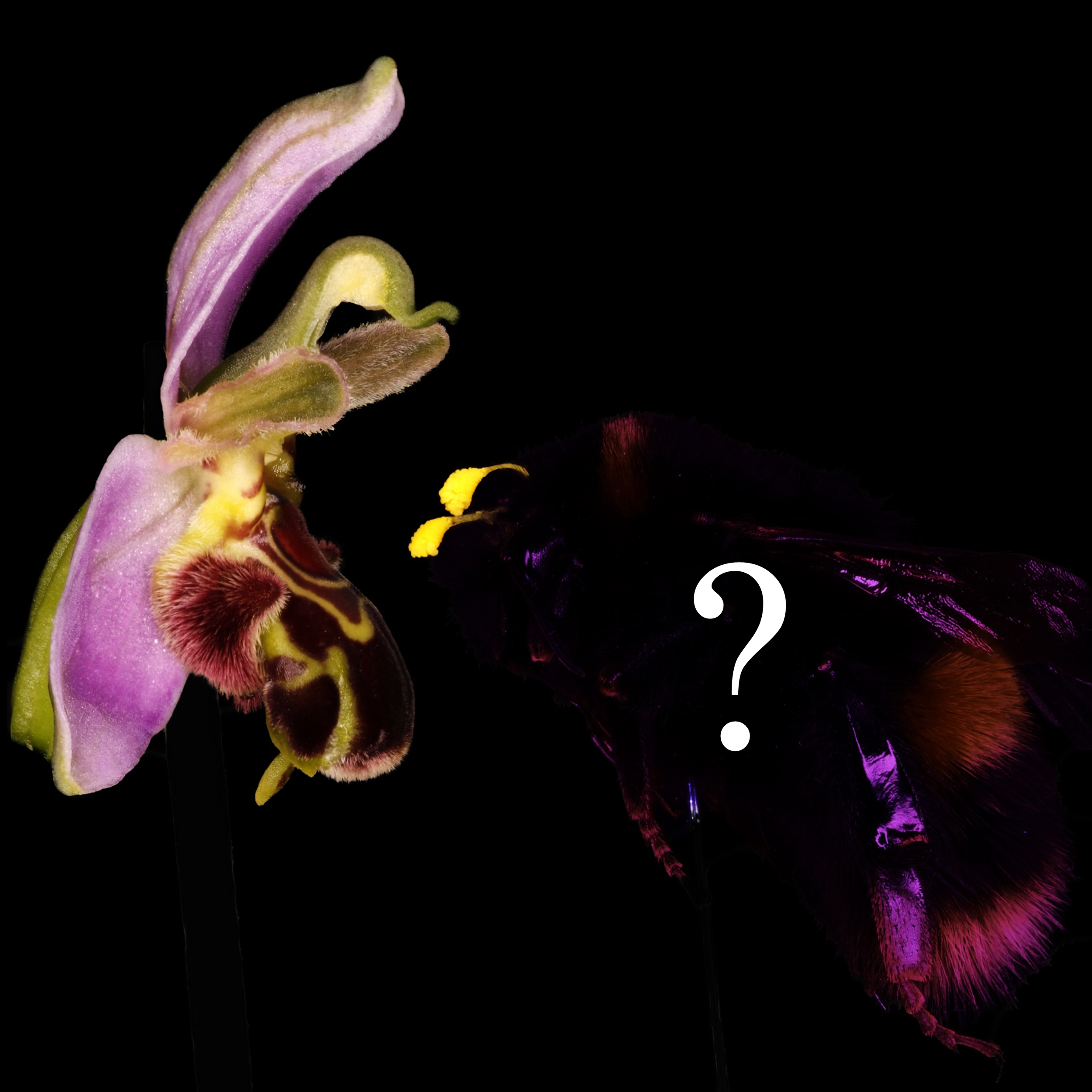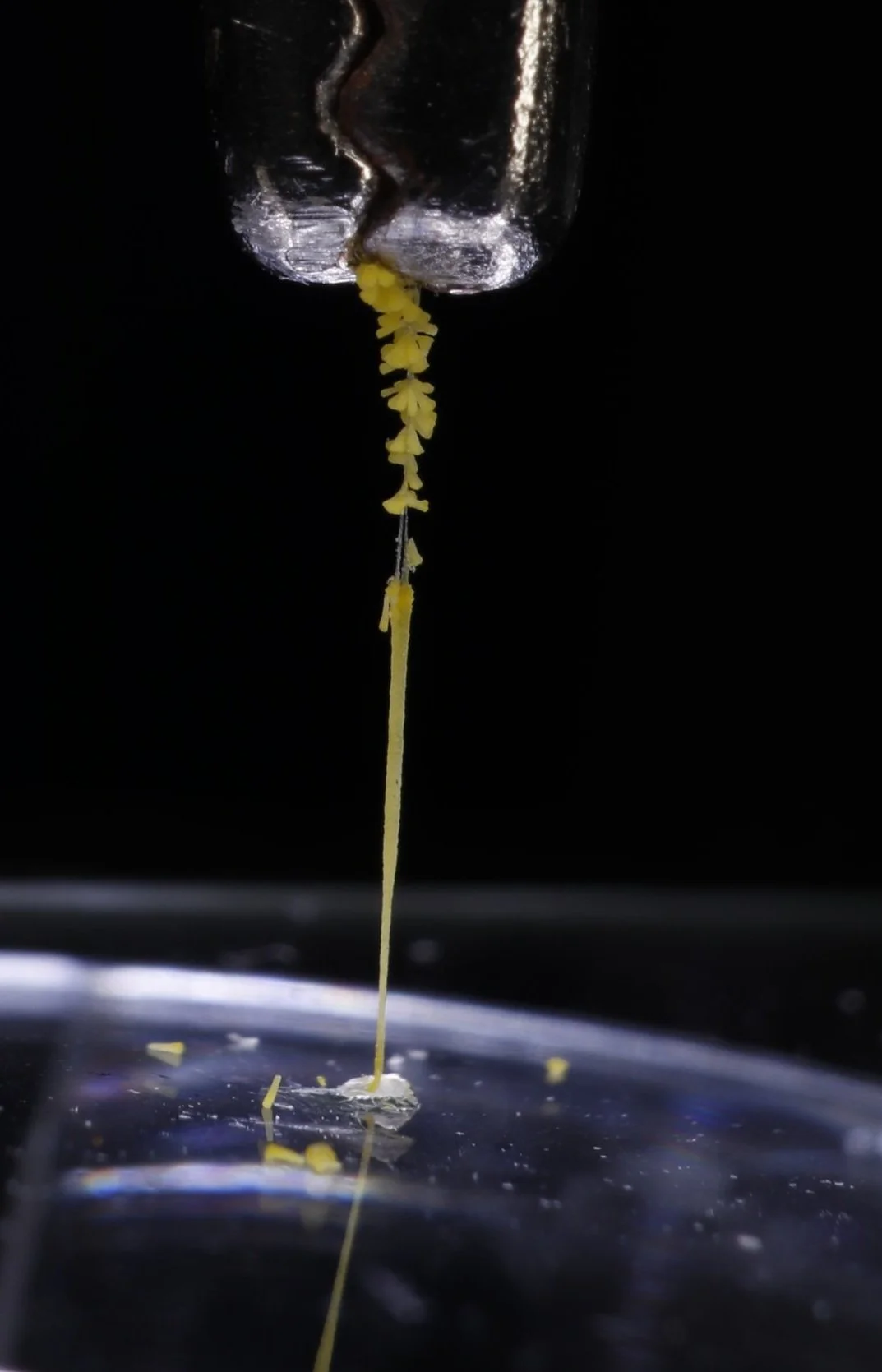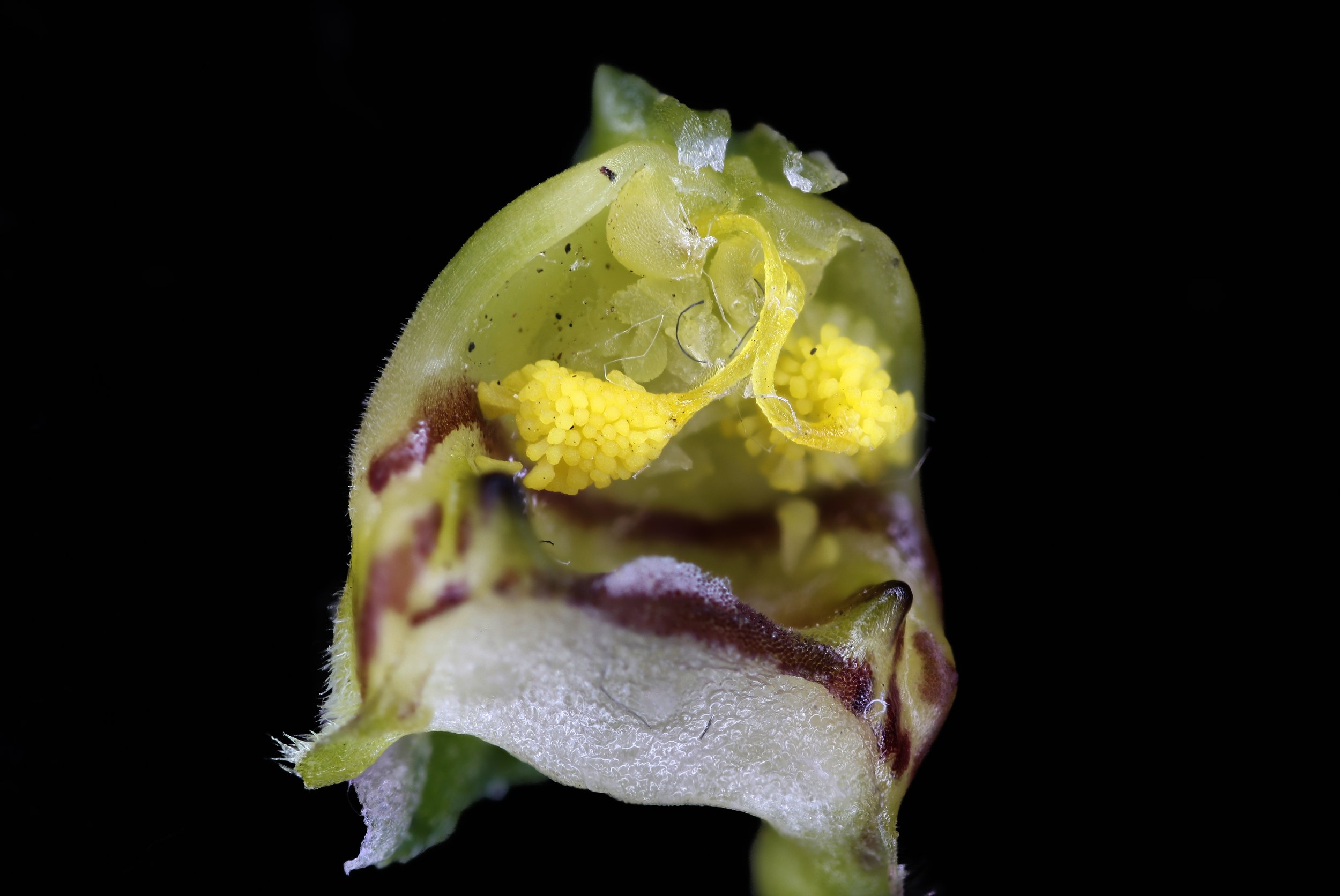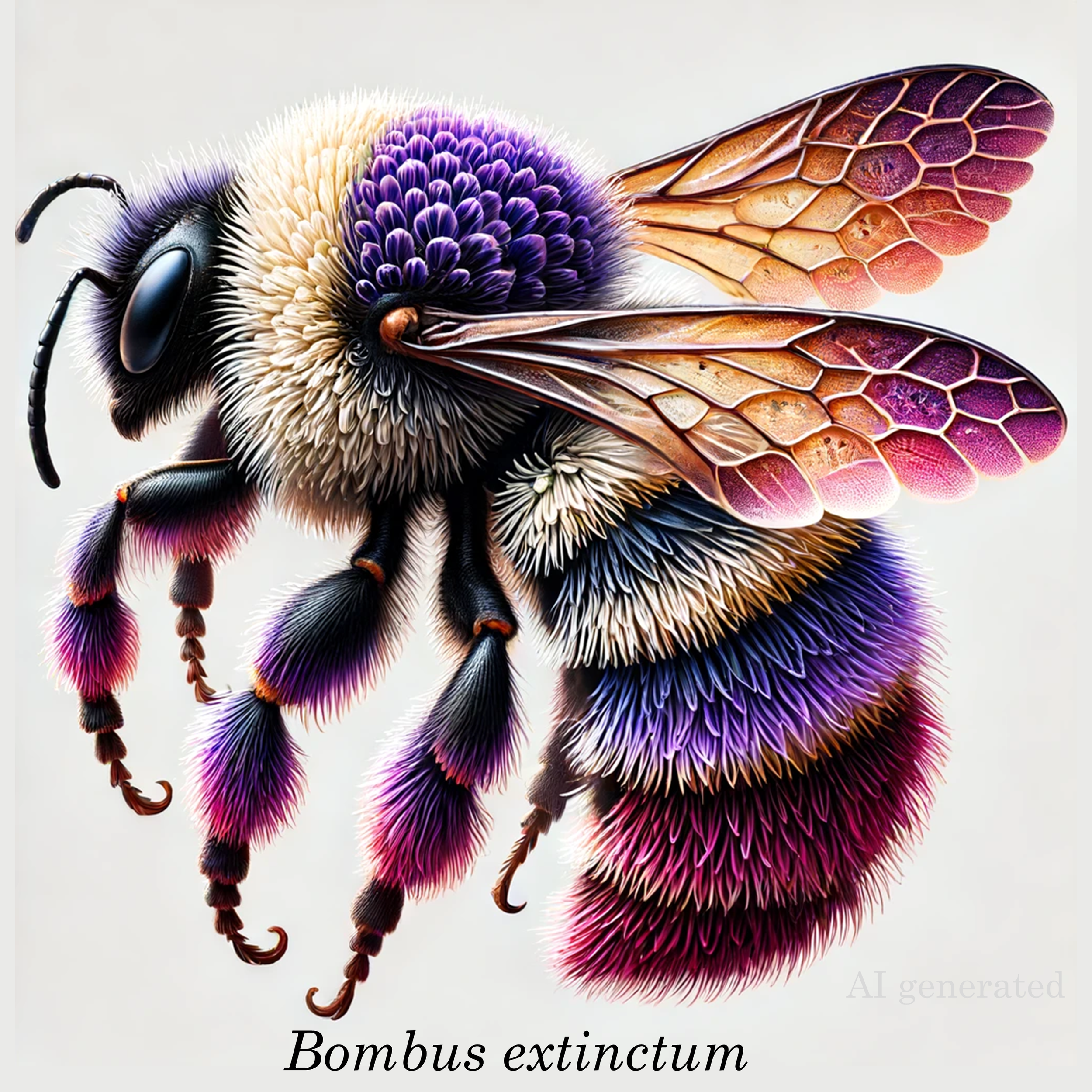
Extinct Strength: What can orchids tell us about their extinct pollinators?
Two flower stand
Bee orchids belong to the genus Ophrys, which can be found across most of Europe, Asia Minor, and North Africa. This genus has evolved a fascinating reproductive strategy, sexual deception. The flowers of Ophrys species mimic the appearance, scent, and texture of female insects, primarily those of the bee family Apidae. This deception tricks male bees into approaching and attempting to copulate with the flowers, thereby facilitating the attachment and dispersal of the orchid's pollen, a strategy known as pseudocopulation. While this pollination strategy relies more on scent than visual appearance to attract male bees. Some Ophrys species exhibit a close resemblance to the female bees they mimic, even replicating how their wings reflect UV light (Ophrys speculum), making it difficult for male bees to distinguish between the real and the mimic. This intricate mimicry ensures that the bees attempt to mate with the flowers, thus achieving pollination. Among the Ophrys species, the most common and widespread is Ophrys apifera, with over 14,000 observations on iNaturalist. Interestingly, Ophrys apifera has shifted from relying on pollinators to practising autogamy, or self-pollination. The prevailing theory suggests that the original pollinator of O. apifera went extinct, prompting the orchid to evolve self-pollination as a survival mechanism. Despite this shift, O. apifera has maintained its overall floral structure across its range, with variations classified into different varieties.
In many ways, Ophrys apifera serves as a living snapshot, preserving clues about the appearance and characteristics of its extinct pollinator. This connection provides a unique opportunity to study and speculate about the appearance of an extinct bumblebee.
PDF version
A tricked bumblebee carries the pollinaria of the bee orchid. Pollinaria were manually placed on this bumblebee.
The extinct pollinator of the bee orchid is a mystery with clues spread around the orchid.
Anatomy
Plate of the anatomy of a slightly larger and more pigmented specimen of Ophrys apifera from Sheffield, UK. a) flower, b) lateral view of labellum and column, c) dorsal sepal, d) petals, e) lateral sepals, f) labellum, g) pollinia attached to stigmatic gel, h) pollinia.
Strength and natural materials
Orchids in the subfamilies Orchidoideae and Epidendroideae have evolved a specialised structure for pollen transfer known as the pollinarium. It consists of compacted pollen masses or pollinia, a structural and elastic fibre called the caudicle, a stipe (which is absent in Ophrys), and a viscidium, the adhesive component. In Ophrys The viscidium is housed in a bursicle, a thin-walled bag that bursts upon contact with the bee, releasing a sugar-based adhesive that firmly attaches the pollinia to the pollinator within seconds.
The pollination process in orchids generally involves four steps:
1. The flower attracts a pollinator.
2. The pollinator interacts with the flower. In pseudocopulation, it attempts to mate with the flower, and the pollinarium becomes attached to the bee.
3. The pollinator escapes the flower, and steps 1 and 2 are repeated with a receiving flower.
4. The insect deposits the pollinia into the stigmatic gel of the receiving flower and must detach itself from the pollinarium.
To break free, the pollinator must overcome the adhesion forces between the caudicles and the pollinia or between itself and the caudicles. Generally, in Epidendroideae, the caudicles stretch and detach from the pollinia. However, early testing indicates that caudicles in Orchidoideae may be more tightly bound due to the presence of elastoviscin, which binds the caudicles to the pollinia. In this case, a weaker viscidium may be the failure point.
For O. apifera The extinct bee pollinator would have needed to exert a maximum force of 0.04 N, with an average force of 0.02 N over a distance of 17 mm, resulting in approximately 0.20 millijoules of work per caudicle (with two caudicles involved). Comparatively, Centris bees in South America need to exert about 0.1 millijoules of work per caudicle, while carpenter bees in Asia may require around 0.4 millijoules. To put this in perspective on a human scale, it would be akin to pulling two ropes, each attached to 60 kg weights, for two metres, with one final pull equivalent to 240 kg for a few seconds. While certainly feasible, it is not an easy task. The orchid must carefully balance the strength of its materials to ensure they are robust enough to withstand the forces during the bee's flight but weak enough to allow the bee to remove the pollinia. This delicate balance highlights the marvel of nature's engineering.
a
b
c
d
Pollinarium of O. apifera being stretched to test its strength. a) pollen grains, b) elastoviscin, c) caudicles d) viscidium.
The pollinia swig into the stigmatic cavity of Ophrys apifera to achieve self pollination.
Speculative placement of the pollinaria of O. apifera on a white tailed bumblebee Bombus lucorum.
Bombus extinctum and conclusions
With this information, we can begin reconstructing the extinct pollinator of Ophrys apifera, which we will call Bombus extinctum. This bee likely measured about 12-15 mm in length, weighed approximately 0.3 grams, and could exert at least 0.08 N of pulling force. it inhabited most of Europe, parts of North Africa, and Asia Minor. Curiously, we also know what females smell like. If the colours of the orchid accurately reflect its pollinator, then Bombus extinctum was likely an ornate bumblebee with purple and white trichomes, a dark lower abdomen, and a thorax interspersed with red and orange hues. Using AI, we can create a rough draft of this extinct species, providing a visual representation of its likely appearance. We can also speculate on the reasons for its extinction. Given that Ophrys apifera is the most abundant Ophrys species today, it is reasonable to assume that its pollinator was once equally widespread. It is less likely that O. apifera achieved its current success solely through improved dispersal and adaptation to climates via self-pollination, as self-pollination generally reduces the rate of adaptation
AI recreation of Bombus extinctum from the description of O. apifera
If Ophrys apifera thrives in today's environmental conditions, why did Bombus extinctum disappear? A valid question is whether the orchid's pseudocopulation strategy contributed to the bee's extinction. The potential impact of pseudocopulation on insect species is an area requiring further research. Chapter 2 of "Demystifying Orchid Pollination" by Adam Karremans provides an excellent discussion on this topic. Orchids have allowed us to have a blurry glance at ancient pollinators that once drove orchid evolution in Europe. How many tales could still be hidden in orchids? We may not know yet, but it's likely more than one.
Recreation of Bombus extinctum approaching O. apifera
References
1. Karremans, Adam., 2022 Demystifying Orchid pollination: stories of sex, lies and deception. Kew publishing. Chapter 2
2. Claessens, J. and Kleynen, J., 2002. Investigations on the autogamy in Ophrys apifera Hudson. Jahresber Naturwiss Vereins Wuppertal, 55, pp.62-77.
3. Gallego Piñol, E., Gelabert, A., Roca Mussons, F.J., Perales, F. and Guardino, X., 2012. Identification of volatile organic compounds (VOC) emitted from three European orchid species with different pollination strategies: two deceptive orchids (Himantoglossum robertianum and Ophrys apifera) and a rewarding (Gymnadenia conopsea). Journal of Biodiversity and Environmental Sciences, 2(5), pp.18-29.Observations.iNaturalist.(n.d.).https://www.inaturalist.org/observations?place_id=any& subview=map&taxon_id=57469&view=speies










